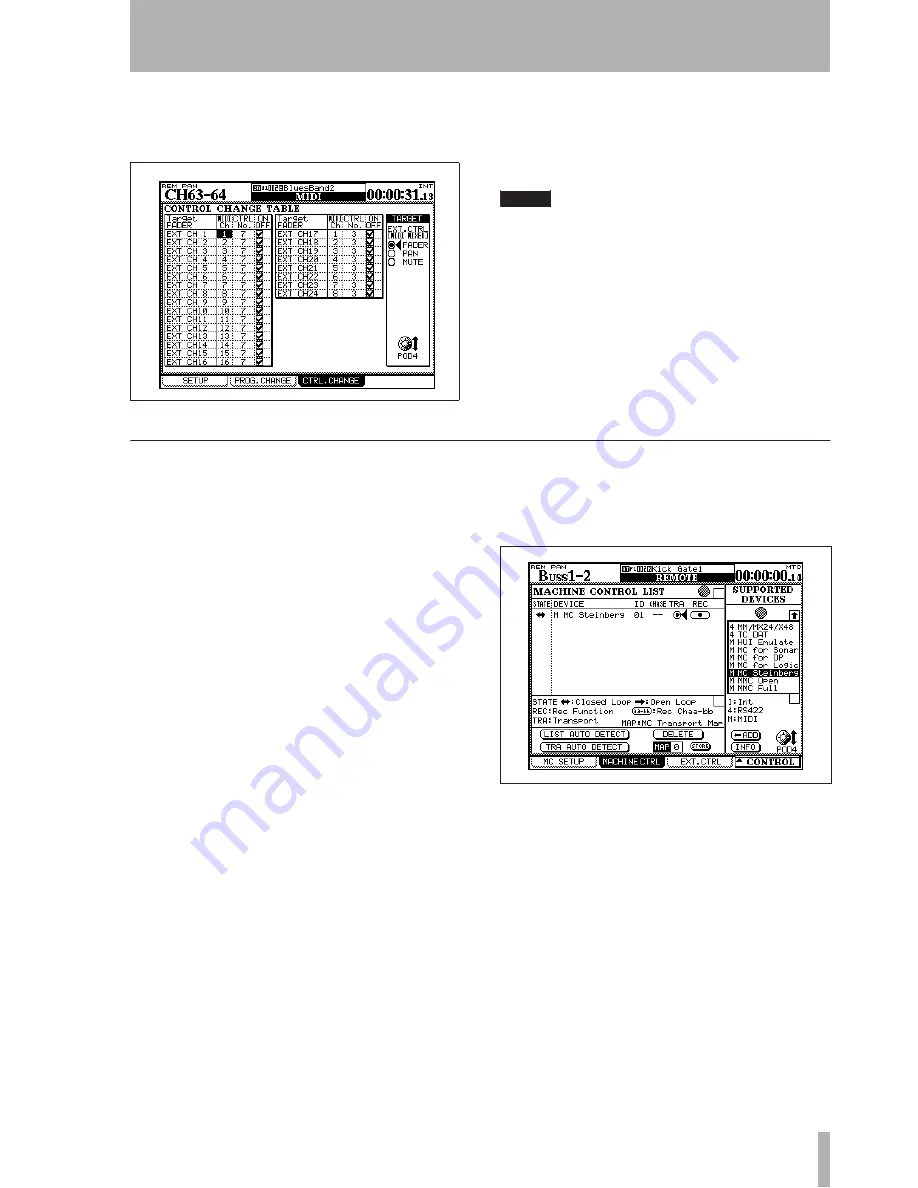
8 – Remote operation : MIDI Control by the DM-4800
TASCAM DM-4800
User’s Manual
113
2
Use the mixer using the
MIDI CTRL.CHANGE
setup
screen (below at Figure 8.7,
MIDI control
change screen
):
Only one control can only be assigned to a
given MIDI channel/controller combination.
•
There are 24 faders available in the
REMOTE
layer, 24 mute controls, and 24 pan controls.
NOTE
The following Control Change messages may be
assigned to these controls: 1–5, 7–31, and 64–95. In
some double-byte controllers, the DM-4800 controls the
LSB of the message.
These are bi-directional assignments—changes made on
the remote device will be reflected on the DM-4800
control surface (in
REMOTE
mode).
Panning is not possible in surround modes which are
not stereo.
DAW controllers
The DM-4800 also supports dedicated control of
popular DAW (Digital Audio Workstation) packages
through Mackie Control, as well as providing a
generic Mackie HUI emulation.
See the documentation of your DAW package to find
out how to set it up for use with external controllers
of these types.
Unlike the controller, fader and mixer functions, the
control here is made through the “embedded” MIDI
channels carried on the USB interface through ports
5, 6 and 7. Up to 3 virtual DAW controllers may be
assigned in a DAW, each using a different MIDI port,
allowing the 24 modules of the DM-4800’s control
surface to be split into three groups of eight modules
each, each representing a different device. Data is
transferred bi-directionally, with the faders and con-
trol surface of the DM-4800 reflecting the current
DAW status.
When such a connection is made, the faders work on
the selected DAW channels, the related encoders pro-
vide pan controls (some emulations provide sends
and EQ), and the
SOLO
and
MUTE
keys work on the
selected channels.
Use the
TRA
(transport) and
REC
(record enable) on-
screen buttons to allow the DM-4800’s transport key
to control the DAW (also see “Selecting devices for
transport control” on page 105):
Several other keys of the DM-4800 control surface
may also be available as DAW controls, depending
on the current implementation (see the appropriate
DAW documentation for exact details of the imple-
mentation for each emulation).
Figure 8.7: MIDI control change screen
if
Figure 8.8: Machine control setup for DAW
transport control
















































